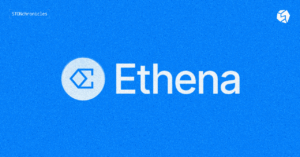A decentralized exchange is a platform that specializes in the trade of digital assets like cryptocurrencies and NFTs. By virtue of being based on the blockchain, a decentralized exchange, or DEX, can access the network and perform all of the same operations like a centralized exchange. However, unlike its centralized counterpart, a decentralized exchange does not act as an intermediary legal entity – it allows users to interact on a peer-to-peer basis, providing them merely with the interface and infrastructure facilities needed.
All decentralized exchanges perform trustless operations by relying on automated smart contracts that act as carriers of information and assets. Such platforms do not hold custody of user funds, since very few of them provide native wallets, meaning that users retain custody of their assets. A last defining characteristic of DEXs is that their order books are not centralized, like those of a centralized exchange’s database, but are rather distributed across the entire network they operate on.
In addition to being free from regulation that acts as a chokehold on centralized exchanges, DEXs can boast higher security – the aspect that will be discussed in the given material together with the challenges that DEXs have to face.
Advantages of DEX Security
The security provided by the decentralized nature of DEXs starts with a few core competencies that allow them to favorably stand out in opposition to their centralized analogues. The following are some of the main advantages that DEXs provide:
- Low censorship – the fact that DEXs have no centralized point of entry or legal entity means that they cannot be controlled externally. This factor frees them from government censorship or oversight on the part of authorities.
- Low counterparty risk – since decentralized exchanges have no centralized authority, the chance that users will be faced with fraud or theft of their funds on the part of the platform’s management is minimal.
- Custodial nature – users of DEXs maintain full control of their funds and do not hand over their private keys to the exchange.
- Transparency – like all things on the blockchain, the information exchanged and hashed by a decentralized exchange is transparent and verifiable by any user.
However, the main security layer of all decentralized exchanges is their decentralized nature, which eliminates the risk of human error and interference. This cancels out a single-point of failure element, which is often the cause of hacks taking place on centralized exchanges. With no centralized authority, the hackers have nothing to attack, other than the host protocol of the DEX, or individual user wallets.
DEX Security Updates
There are many ways through which decentralized exchanges continuously bolster their security, allowing them to challenge emerging threats and vie for the title of the most secure trading venues on the market.
- Smart contract audits – many decentralized exchanges strive to showcase the security of their systems by hiring third-party auditing firms to conduct complete reviews of their smart contracts. Such audits can help reveal vulnerabilities and exploits. The more reputable the firm – the higher the standing of the exchange.
- Bug bounties – many exchanges attract members from their communities to conduct independent audits of their entire systems. Such user perspectives on the operation of the system help reveal threats and improve security.
- Oracle monitoring – DEXs routinely update and audit their oracles, which act as sources of external information for the platforms.
- Round-the-clock communication – having a live and open channel of communication with the community is one of the main factors maintaining the security of DEX and their reputations.
- Layer 2 solutions – the addition of new Layer 2 solutions to the security of DEXs helps lower gas fees and speed up transaction processing by talking the bulk of smart contract data above the main protocol.
- External sources – security libraries are third-party sources of information that DEXs can rely on to prevent some types of attacks and improve their security.
- Multisig wallets and 2FA – many DEXs employ multisignature wallets and 2-Factor Authentication to provide standard security layers.
Other ways through which decentralized exchanges can improve their security on fronts that are beyond the software layer include:
- User custody – by improving and perfecting the user interface, DEXs can drastically streamline transaction processing and guide users to perform safe operations. Such an approach also increases the overall level of user knowledge and helps prevent security breaches.
- Liquidity pools – by accumulating a pool of liquidity, DEXs can have ample resources to continue their operations and continue providing services to users. Though decentralized exchanges have much less liquidity than their centralized counterparts, they still manage to accumulate the necessary volumes by granting special incentives to users who provide the needed funds.
- Education – some decentralized exchanges provide compilations of materials, such as guides and comprehensive studies on blockchain-related issues to increase the level of savviness of their users. Some platforms have been known to launch educational courses on blockchain and cryptocurrencies.
DEX Security – The Challenges
Decentralized exchanges employ many security layers employed by decentralized exchanges, but it would be proper to explore the unique challenges that encounter in the dynamic and constantly evolving blockchain space. Among the main threats are the following.
Smart contract vulnerability – Smart contracts are inherently vulnerable as programs and are subject to the following types of attacks:
- Reentrancy attack – a type of attack during which a smart contract is intercepted by the call of another program and is subjugated to recall the original action.
- Over and underflow – a case where the data limits prescribed within a smart contract are exceeded or reduced below the minimum, resulting in a fault.
- Front-run – an inherent vulnerability of the blockchain resulting from its transparent nature, allowing attackers to foresee incoming transactions and pay gas limits to bypass the queue and conduct malignant manipulations.
- Manipulation with oracles – since many DEXs are dependent on the data provided by oracles to execute smart contracts, some malignant actors can intentionally feed erroneous data and thus modify the results of operations.
- Improper protocol implementation – though DEXs are quite secure, the incorrect implementation of their basic protocols can result in vulnerabilities and exploits.
- Impermanent loss – a common problem with DEXs that results in minute changes in the prices of assets between the moment the operation is put in action and executed, resulting from the time it takes miners to actually execute the transaction.
- Rug pulls – a classic case of fraud, when a fake team of developers launches a fake DEX, dupes users into filling up their account balances, and then flees with the funds.
- Flash loans – a type of attack when an attacker bundles a large number of trades in a smart contract and manipulates token prices.
- Phishing – a constant type of attack that involves the malignant entities resorting to social engineering practices. They send fake emails to DEX users, urging them to access a fake link and change their passwords, pretending to be the DEX’s support team. The aim of the attack is to gain access to user credentials and steal funds.
An example of the vulnerability of DEXs can be found in the case of the attack that took place on the Uniswap exchange in April of 2023, when a highly sophisticated sandwich attack was launched and resulted in the loss of over $25.2 million from a series of 8 pools of liquidity. The attack itself was executed through a large trade order that was manipulated on either side of the transaction, shifting the end price by exploiting a vulnerability in the DEX’s smart contract. An investigation revealed that the attackers used a validator that was specifically funded for the purpose of the hack to intentionally manipulate the upcoming transaction, leading to the conclusion that it was premeditated.
Key Takeaways
Decentralized exchanges leverage the fact that they have no centralized authority. With the help of the inherent characteristics of the blockchain, such as immutability and transparency, this spares DEXs from external interference on the part of government authorities and hackers seeking to bypass localized security barriers. Though highly secure, DEXs are still exposed to some common types of attacks that rely on the careless nature of users and their lack of attention to basic security measures.





